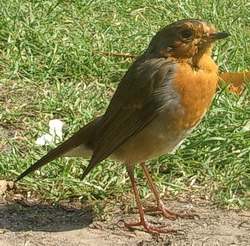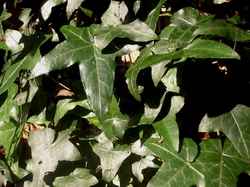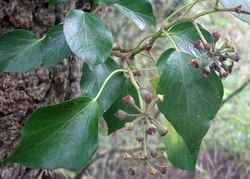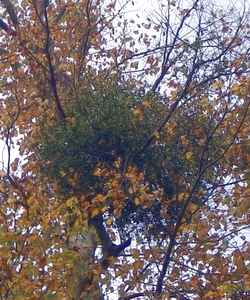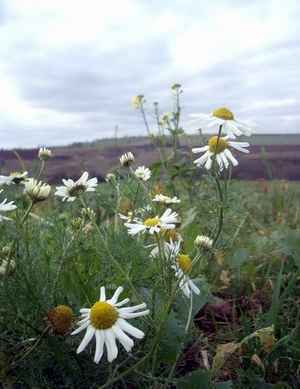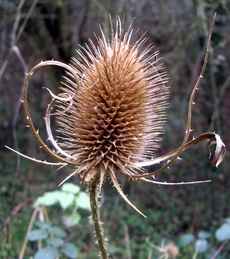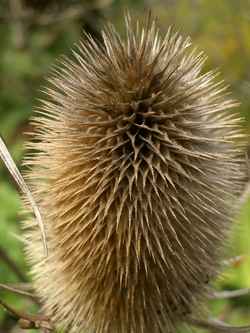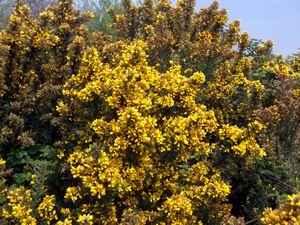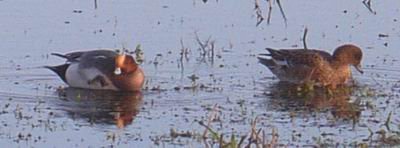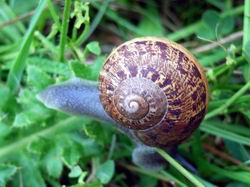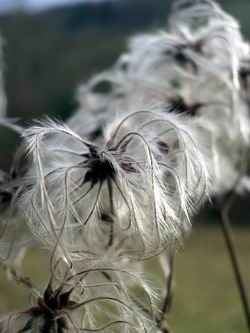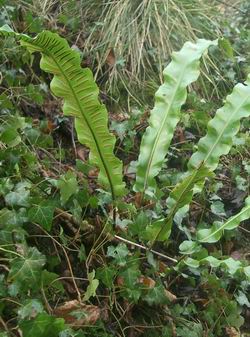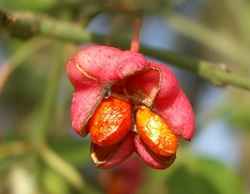When to Watch Wildlife |
J | F | M | A | M | J | J | A | S | O | N | D | Search |
Current wildlife highlights |
||
|
What's new on this site |
||
|
Wildlife calendar |
||
|
Plants and Animals |
||
|
Habitats |
||
|
Wildlife sites |
||
|
WWW links |
||
|
Guide Books |
||
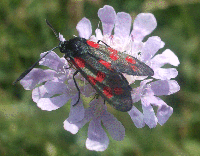 |
||
|
© PMcS 2006 |
|
December |
||||||||||||||||||||
|
||||||||||||||||||||
|
||||||||||||||||||||
| Habitats and species |
||||||||||||||||||||
|
Parks and gardens:
Winter provides an opportunity to attract many different types of birds,
which will feed at bird tables or take food put out on the ground.
Some birds not normally associated with gardens or bird tables will lose
their timidity when the weather conditions become particularly harsh.
The more varied the food (e.g. sunflower hearts, peanuts, suet fat,
fruit, seeds) the better chance you have of enticing a variety of
species. Although food is welcome at any time, it is vital to
maintain a constant pattern of food supply until spring once you have
started. |
||||||||||||||||||||
|
Woodlands
(including wood pasture): At night Tawny owls may be heard
staking out territory, with both the male and the female birds creating
the classic owl 'tu-wit tu-who'. Occasional flocks of small birds will
move through the otherwise silent woods, searching for food. By
moving together they have more chance of disturbing insects that would
otherwise go unnoticed. |
||||||||||||||||||||
Arable and
hedgerows: In the fields where winter wheat has not been sown some
arable weeds may be found. Scented mayweed and
shepherd's purse, normally overlooked, can provide some relief from
the winter monotony. Some arable weeds bring lasting colour, such
as the diminutive scarlet pimpernel. Their red flowers will only
open during the bright mornings.
|
||||||||||||||||||||
Road verges: Teasel stems stand in clusters on road verges,
where the ground has been disturbed and they have gained a foot hold.
They stark and brittle. Their seed heads provide a favourite
source of food for goldfinches, who descend in 'charms', and
twitter and fuss. Only small birds such as these, with slim and
pointed beaks, can reach the seeds within the teasel head.
|
||||||||||||||||||||
Chalk and limestone grasslands: Winter in a quiet time on these grasslands as just the cattle and the sheep roam about. |
||||||||||||||||||||
Meadows (neutral) and flood plain grasslands: During winter low lying meadows may be flooded following a rainy period. This may attract gulls and ducks. |
||||||||||||||||||||
|
Acidic grasslands:
These grasslands are often found on moorlands and mountains.
During winter they can be forbidding places, but still small birds such
as meadow pipits and skylarks can be spotted. |
||||||||||||||||||||
Heathlands: The stark
winter heathlands still support many small birds. The small brown
birds with streaked backs are meadow pipits and are commonly seen
chasing down their insect prey. In the south some heathland sites
support Dartford warblers. Until recently this was the only
warbler that was considered to be a permanent resident. However
blackcaps are increasing seen in winter, although they may not be
the same ones that breed in Britain during the summer months. The
prickly gorse may still bare its bright yellow flowers even in
December.
|
||||||||||||||||||||
Mountain and Moorlands (uplands): Uplands are at their harshest. The mountain hare, the stoat and ptarmigan (a game bird) are all species which change to a white winter plumage from their dark summer coats. This provides camouflage from both the hunter and the hunted! |
||||||||||||||||||||
Rivers and ponds
(including bogs and mires): Estuaries and inland lakes are filling
up with more waders and wild fowl. Wigeon, teal,
tufted duck, pintail and shovelers are
particularly abundant ducks. The wigeon give the sound
track to the spectacle with their high pitched call, and are accompanied
by the startled lapwing 'peewit'.
Over some extensive wetlands, birds of prey can be seen such as
marsh harriers and peregrines, if you are lucky and patient.
Other birds may well mob them. The peregrines will hunt
duck unwary ducks, but can only take a bird in flight. |
||||||||||||||||||||
|
Sea and the sea
shore (including estuaries): Along the seashore, where the ground is
never totally frozen due to the ebbing tides, food can be found by many
wading birds and wildfowl. Kingfishers and otters
also move to estuaries at this time for the same reason. |
||||||||||||||||||||
|
Mammals: Badgers do not hibernate, but are much less
active now. However both badgers and foxes can been
seen at any time. The population of smaller mammals, such as
rabbits, shrews, mice and voles, drops
dramatically during winter as food availability becomes the restricting
factor to survival. |
||||||||||||||||||||
| Birds:
Some species chose to flock together to roost, as described on the
November page, at this time of year. During the cold nights the
birds will fluff out their feathers to provide extra insulation.
Sometimes bird boxes are used by blue tits, great tits and
wrens for instance to provide extra overnight shelter. On some
windy days the mistle thrush may sing battling into the stormy
weather from a lofty perch. This largest of thrushes has a wistful
high pitched song, without the repeated phrases of the song thrush
or the fluid clarity of the black bird. |
||||||||||||||||||||
|
Amphibians & Reptiles: All of our amphibian and reptile species
(i.e. common toad and natterjack toad; slow-worm;
common and sand lizard; common newt, smooth newt
and great crested newt; adder, smooth snake and
grass snake) are all hidden away under ground until spring, and
sometimes together in mixed groups. Only the common frog
chooses a different approach by hiding at the bottom of a pond.
|
||||||||||||||||||||
Insects: Very few insects can be found flying around during
December. The exception may be clouds of male gnats dancing
in the hope of attracting a passing female. Look into your shed or
attic now and you may come across adult small tortoiseshell or
peacock butterflies waiting out the winter.
Some slugs and snails still brave the conditions.
Their slimy trails differ in that snails trails are not
continuous, unlike slugs. |
||||||||||||||||||||
|
Plants:
Most plants do not grow during winter but rather lay dormant. The
first species to emerge in spring often have food reserves, such as
bulbs and corms to call upon. Some plants can still be found
however, such as ferns and mosses. The hart's tongue fern
for instance has beautiful long bright-green leaves and can be found
growing in woodlands and in the cracks of damp walls. 'Hart' is
another name for a deer and together with the tongue shape of the
leaf it is possible to see how this fern got its name. In the hedgerows you may see old man's beard climbing between the branches, with its fluffy seed heads.
In chalky areas the spindle-tree stands out with it bright orange fruits and red capsules. These seeds are poisonous to us and are violent purgatives - fortunately for birds this is not the case.
|
||||||||||||||||||||
Fungi: The mushrooms and toadstool fruiting bodies of most fungi disappear once hit by the winter frosts. However some continue to thrive such as the wood blewit. Some of the less seasonal fungi are now more evident. The soft, brown ear-like Jew's ear (or Jelly ear) fungus can be found growing on rotting elder branches. |
||||||||||||||||||||
|
|
||||||||||||||||||||
All images and text are copyright PMcS 2007
